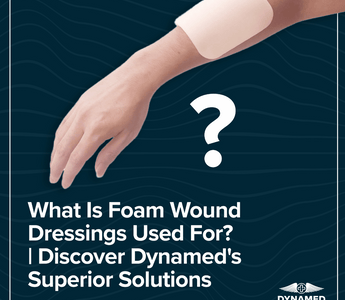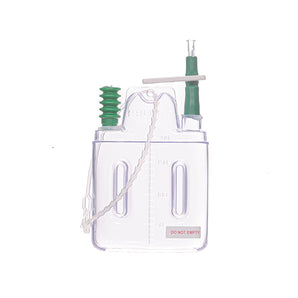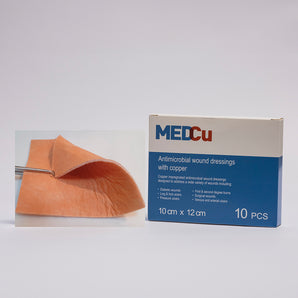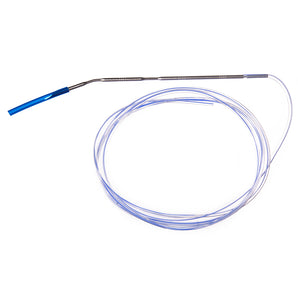When it comes to wound care, choosing the right dressing can make a significant difference in the healing process. Foam wound dressings have become a popular choice due to their versatility and effectiveness. But what exactly are they used for?
Foam wound dressings are designed to manage a variety of wound types, offering both protection and a conducive environment for healing. They are particularly useful for wounds with moderate to heavy exudate, as they can absorb excess fluid while keeping the wound moist. This balance helps to promote faster healing and reduce the risk of infection.
Key Takeaways
- Versatility in Use: Foam wound dressings are effective for managing a wide range of wound types, especially those with moderate to heavy exudate.
- Optimal Healing Environment: These dressings help maintain a moist wound environment, crucial for promoting faster healing and reducing infection risks.
- Composition and Types: Made from soft, absorbent polyurethane, foam dressings come in various forms, including adhesive, non-adhesive, silicone-coated, and antimicrobial options, each suited for different wound care needs.
- Key Benefits: Foam dressings provide excellent exudate absorption, thermal insulation, and wound bed protection, enhancing healing processes and patient comfort.
- Comparative Advantage: Compared to hydrocolloid and film dressings, foam dressings offer superior cushioning, better exudate management, and versatility, making them a top choice for advanced wound care scenarios.
Understanding Foam Wound Dressing
Foam wound dressings play a crucial role in advanced wound care. These innovative wound care products from companies like Dynamed combine protection and a conducive healing environment.
Definition and Composition
Foam wound dressing consists of soft, absorbent polyurethane material. This structure helps manage wound exudate effectively while maintaining moisture balance. High-quality compositions like those from Dynamed Pharmaceuticals incorporate breathable layers that reduce the risk of maceration and promote quicker recovery.
Types of Foam Dressings
There are several types of foam dressings for different wound care scenarios. Examples include:
- Adhesive Foam Dressings: These have a sticky border for secure attachment without additional tapes.
- Non-Adhesive Foam Dressings: These require secondary dressings to stay in place, suitable for sensitive skin.
- Silicone-Coated Foam Dressings: With a gentle adhesive layer, these offer pain-free removal, ideal for fragile skin.
- Antimicrobial Foam Dressings: Infused with agents like silver to prevent infection in high-risk wounds.
Dynamed’s range includes advanced options tailored for diverse healthcare needs, supporting efficient wound care management.
Applications of Foam Wound Dressing
Foam wound dressings prove invaluable in various wound care scenarios. They manage moisture, protect the wound bed, and provide insulation. Let's explore these applications further.
Managing Exudate
Foam wound dressings handle moderate to heavy exudate well. They're designed with a soft polyurethane foam that absorbs excess fluid efficiently. This characteristic makes them ideal for wounds like pressure ulcers and post-operative wounds. By maintaining an optimal moisture balance, they help prevent maceration and skin breakdown, significantly enhancing the healing process.
Providing Thermal Insulation
Keeping the wound environment warm is crucial for cell function and tissue repair. Foam dressings play a key role here as they offer excellent thermal insulation, helping maintain the wound at a stable temperature. This feature supports enzymatic activity and collagen synthesis, both vital for effective healing. With advanced foam dressings from Dynamed, we're ensuring that the healing environment remains conducive to rapid recovery.
Protecting Wound Bed
A protected wound bed is essential for healing. Foam dressings cover wounds securely, shielding them from external contaminants and reducing infection risks. Their thick, cushioning layer minimises trauma from pressure and friction, making them suitable for delicate and chronic wounds. For example, Dynamed's foam dressings come with breathable layers that allow vapor transmission while blocking bacteria, thus offering comprehensive protection.
Foam wound dressings are a versatile option in advanced wound care, catering to various types of wounds with their multifunctional benefits.
Benefits of Using Foam Wound Dressing
Foam wound dressings offer numerous advantages in wound care, making them a top choice for medical professionals. Let's dive into the specific benefits they bring to wound management.
Enhancing Healing
Foam wound dressings create an optimal healing environment by maintaining a moist wound bed, crucial for advanced wound care. They support cellular activities, including the migration of cells and synthesis of collagen, essential for tissue repair. These dressings are highly absorbent, managing exudate efficiently to prevent maceration and promote healthier tissue.
Minimizing Pain and Trauma
Foam dressings are designed with soft, flexible materials that conform to the wound's shape, providing cushioning and protecting against external pressure. This reduces pain and trauma during dressing changes. They don't adhere to the wound bed, thus minimising disruption to newly formed tissue. This feature significantly enhances patient comfort and leads to quicker recovery times.
The comprehensive approach of foam wound dressings in both maintaining a conducive healing environment and minimizing discomfort showcases their vital role in modern wound care. Brands like Dynamed continue to be trailblazers in offering innovative wound care solutions, ensuring both patient comfort and improved therapeutic outcomes.
Comparison with Other Wound Dressings
Selecting the right wound dressing is critical for effective wound management. Let's compare foam wound dressings with hydrocolloid and film dressings to understand their unique benefits.
Foam vs Hydrocolloid Dressings
Foam wound dressings, like those produced by Dynamed, excel in absorbing moderate to heavy exudate. They maintain a moist healing environment, which is crucial for wound healing. On the other hand, hydrocolloid dressings are ideal for wounds with low to moderate exudate. These dressings form a gel-like substance upon contact with wound exudate, promoting autolytic debridement and keeping the wound moist.
However, foam dressings offer superior cushioning, making them more comfortable for patients, especially when pressure is applied. Hydrocolloids may not be as comfortable in high-pressure areas due to their less cushioned nature. Foam dressings also provide a higher level of exudate management, making them suitable for wounds requiring frequent dressing changes.
Foam vs Film Dressings
Film dressings, another category of wound care products, serve as a protective barrier against external contaminants. They're typically used on superficial, non-exudating wounds or as a secondary dressing. Film dressings are transparent, allowing for wound inspection without removal, but they lack the absorbent properties of foam dressings.
Foam dressings, including those by Dynamed Pharmaceuticals, offer better exudate management and cushioning. They are breathable, yet still provide an effective barrier against bacteria and external contaminants. This makes them versatile for various wound types, including those with higher levels of exudate.
While film dressings are useful for superficial wounds or to secure other dressings, foam dressings provide superior moisture retention and exudate management. This makes them a more versatile choice for advanced wound care, especially for wounds with moderate to heavy exudate.
Conclusion
Foam wound dressings play a crucial role in managing wounds with moderate to heavy exudate. They offer excellent absorption, maintain a moist environment, and cushion the wound, enhancing patient comfort. Compared to hydrocolloid and film dressings, foam dressings provide superior exudate management and versatility. Products like those from Dynamed Pharmaceuticals are particularly effective, making them a reliable choice in advanced wound care. By selecting the right dressing, we can significantly improve healing outcomes and reduce infection risks.
Frequently Asked Questions
What are foam wound dressings used for?
Foam wound dressings are used to manage wounds with moderate to heavy exudate. They help in absorbing excess fluid, maintaining a moist environment, and promoting faster healing while reducing infection risks.
How do foam dressings compare to hydrocolloid dressings?
Foam dressings are ideal for wounds with moderate to heavy exudate due to their superior absorbency. Hydrocolloid dressings are better suited for wounds with low to moderate exudate and promote autolytic debridement by maintaining a moist environment.
What is the main benefit of using film dressings?
Film dressings act as protective barriers for superficial wounds. They are not as absorbent as foam dressings but are useful for keeping out bacteria and other contaminants.
Why are Dynamed foam dressings recommended?
Dynamed foam dressings are recommended for their superior moisture retention, exudate management, and cushioning, providing excellent comfort and effective wound care for patients with moderate to heavy exudate.
Can foam dressings prevent infection?
Yes, foam dressings can help reduce infection risks by maintaining a moist healing environment and absorbing excess fluid, which can otherwise promote bacterial growth.
Are foam dressings suitable for all types of wounds?
Foam dressings are particularly suitable for wounds with moderate to heavy exudate. They may not be ideal for dry wounds or those with light exudate, where other types like hydrocolloid or film dressings may be more appropriate.
How often should foam dressings be changed?
The frequency of changing foam dressings depends on the amount of exudate and the specific wound conditions. Typically, they can be left in place for several days but should be changed as per medical advice or when they become saturated.






